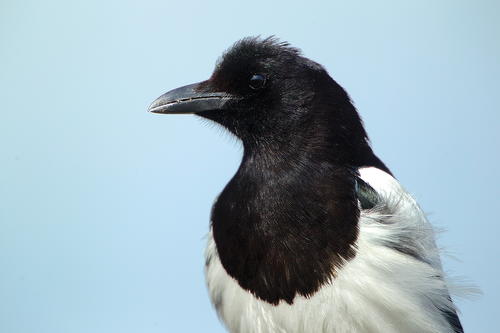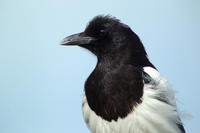The Trickster
Magpies are smart birds and good-looking, too.

Look into the eyes of a bird and a wary intelligence peeks back. Gaze into a magpie’s and you find the cleverness to solve puzzles, the foresight to reach goals, and the wit to see the humor in the surrounding world. Magpies are smart birds.
Although magpies are related to crows and jays, not even the most colorful jay can match the long tail, deep black body with green and violet iridescence, and crisp white abdomen and scapulars of the black-billed magpie (Pica hudsonia), and the yellow bill and spectacles of the slightly smaller yellow-billed magpie (Pica nuttalli). They are both striking birds.
Brains and beauty are assets in the wild world. Add a dash of bravado and you get a natural trickster. Some Native American mythologies honor magpies as beautiful messengers of their creators, while others tell about the magpie’s more notorious habit of harassing animals and stealing food. Lewis and Clark discovered the dual nature of magpies during their epic coast-to-coast exploration. Magpies “made pests of themselves around the camp, snatching food almost from a man’s fingers,” they said, but the explorers also lauded the bird as “a butifull thing.”
Read NextReflections on the Goldeneye



